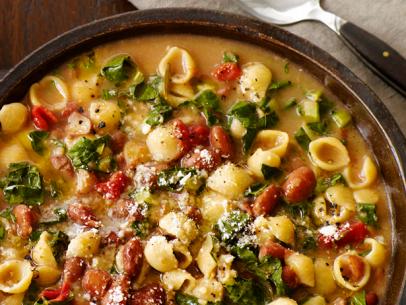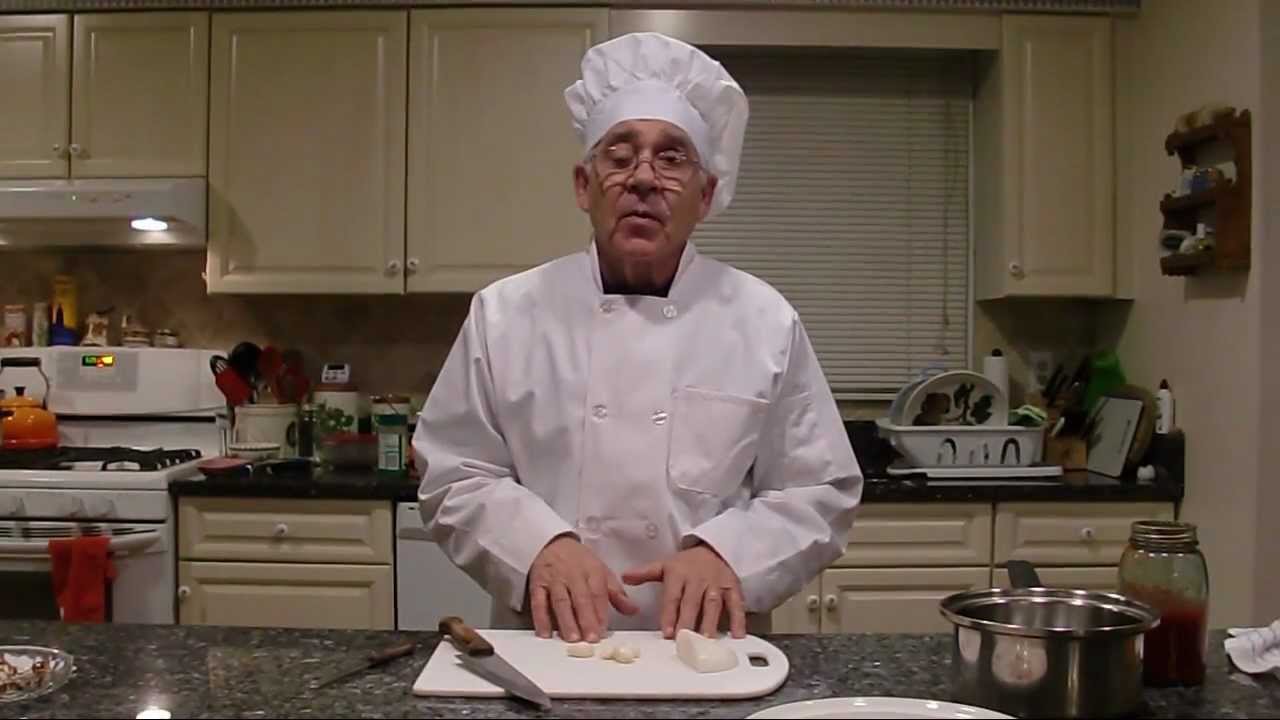Pasta e Fagioli (Pasta Fazool) Chef Pasquale
Pasta e Fagioli (Pasta Fazool)
Chef Pasquale
Pasta e fagioli, meaning “pasta and beans“, is a traditional Italian dish. Like many other Italian favorites, including pizza and polenta, the dish started as a peasant dish, being composed of inexpensive ingredients. It is often called pasta fasul (fazool) in the United States, derived from its Neapolitan name, pasta e fasule.

Recipes for pasta e fagioli vary, the only true requirement being that beans and pasta are included. While dish varies from region to region it is most commonly made using cannellini beans, Great Northern beans or borlotti beans and a small variety of pasta such as elbow macaroni or ditalini. The base typically includes olive oil, garlic, minced onion, celery, carrots and often stewed tomatoes or tomato paste. Some variations omit tomatoes and instead use a broth base. Preparation may be vegetarian, or contain meat (often bacon or pancetta) or a meat-based stock.
The recipe varies greatly based on the region or town in which it is prepared, depending on available ingredients. The consistency of the dish can vary, with some being soupy, while others are much thicker. For instance, in Bari the dish is thicker in consistency and uses mixed pasta shapes. It also uses pancetta in the base of the sauce. Other varieties call for the beans to be passed through a food mill, giving it a stew-like consistency.
The word for “beans” varies in different Italian languages, e.g. fagioli in standard Italian, fasule in Neapolitan, and fasola in Sicilian. Pastafazoola, a 1927 novelty song by Van and Schenck, capitalizes on the Neapolitan pronunciation in the rhyme, “Don’t be a fool, eat pasta fazool”, and the Dean Martin song “That’s Amore” includes the rhyme “When the stars make you drool, just like pasta fazool, that’s amore”.

